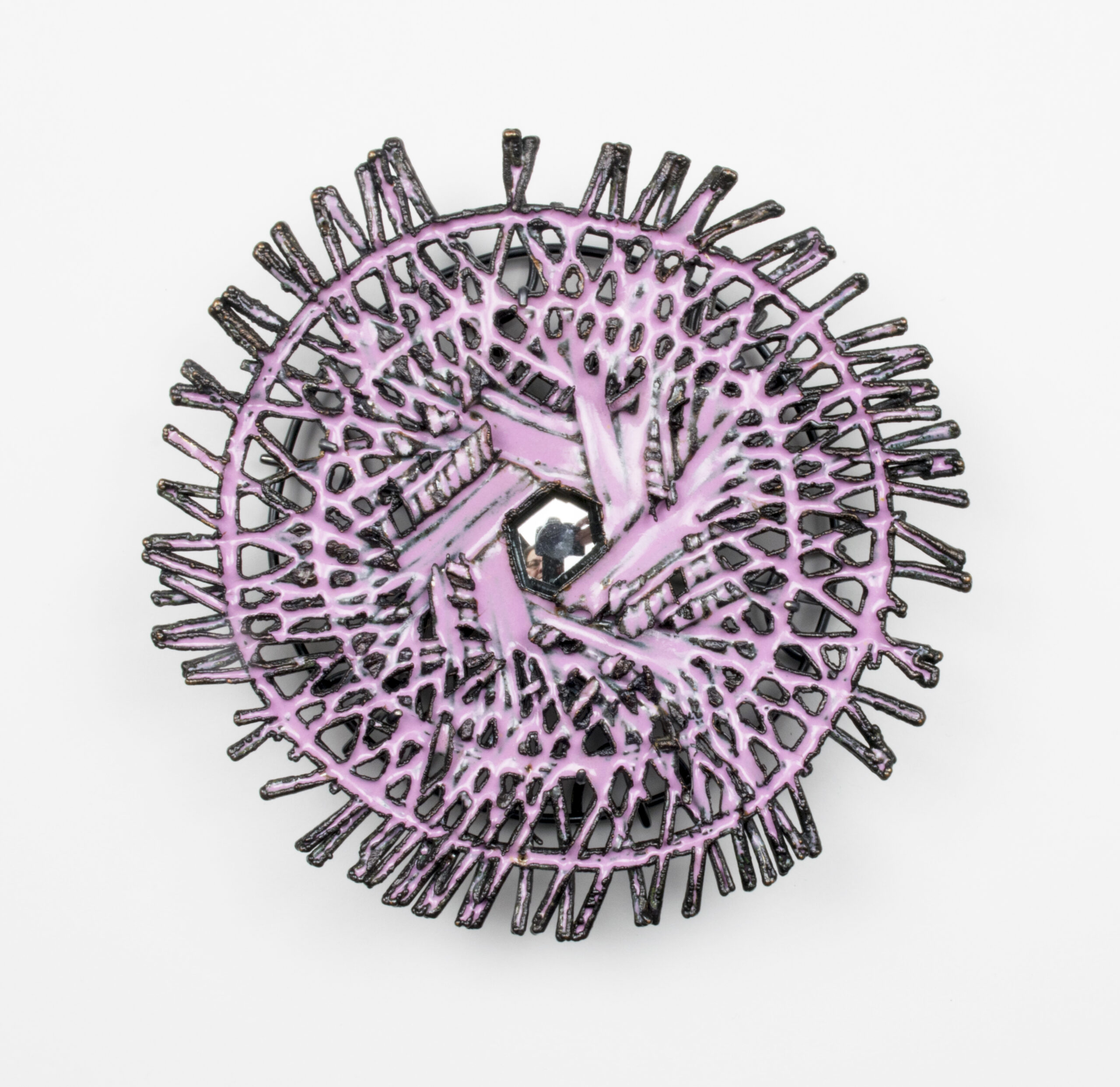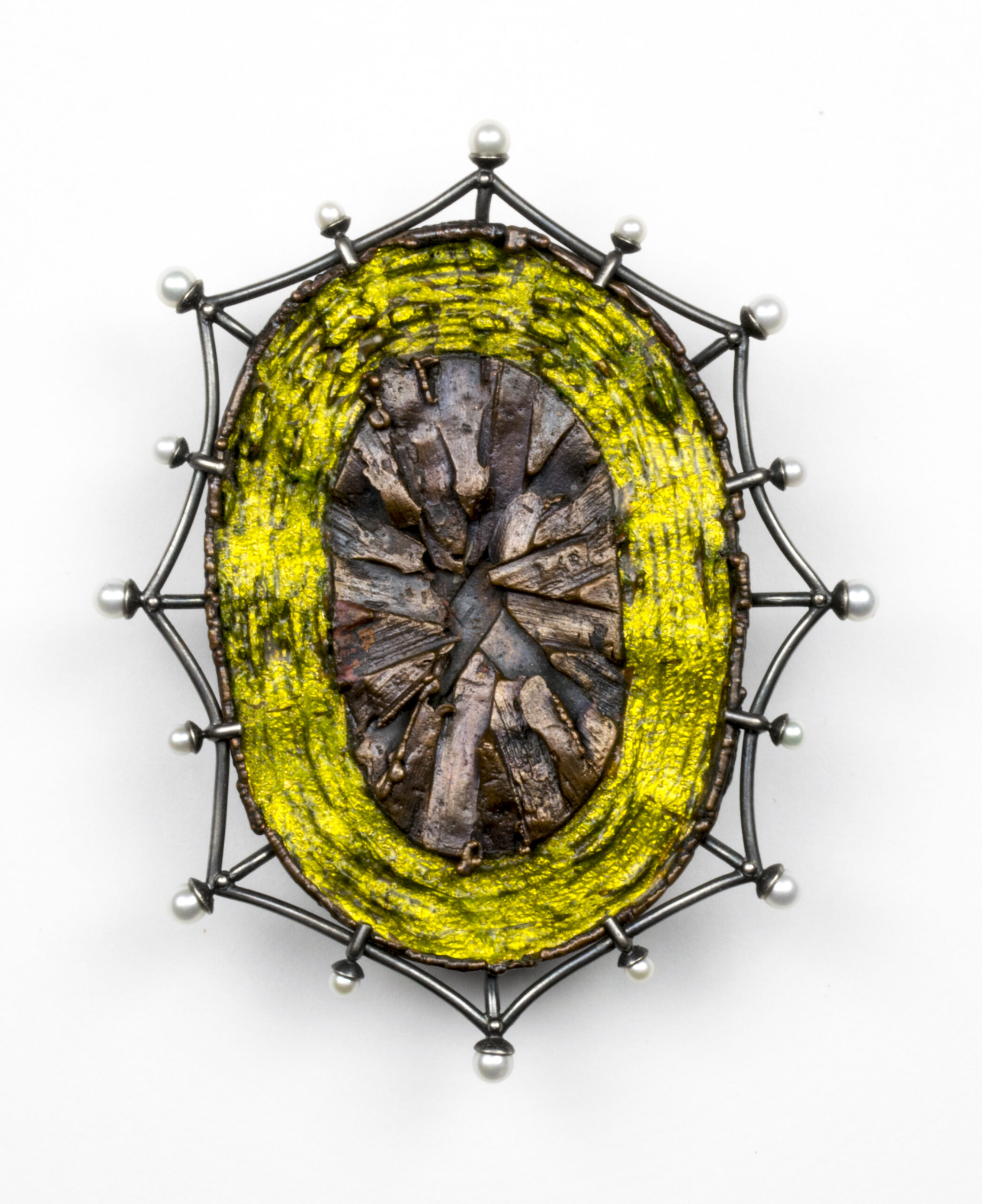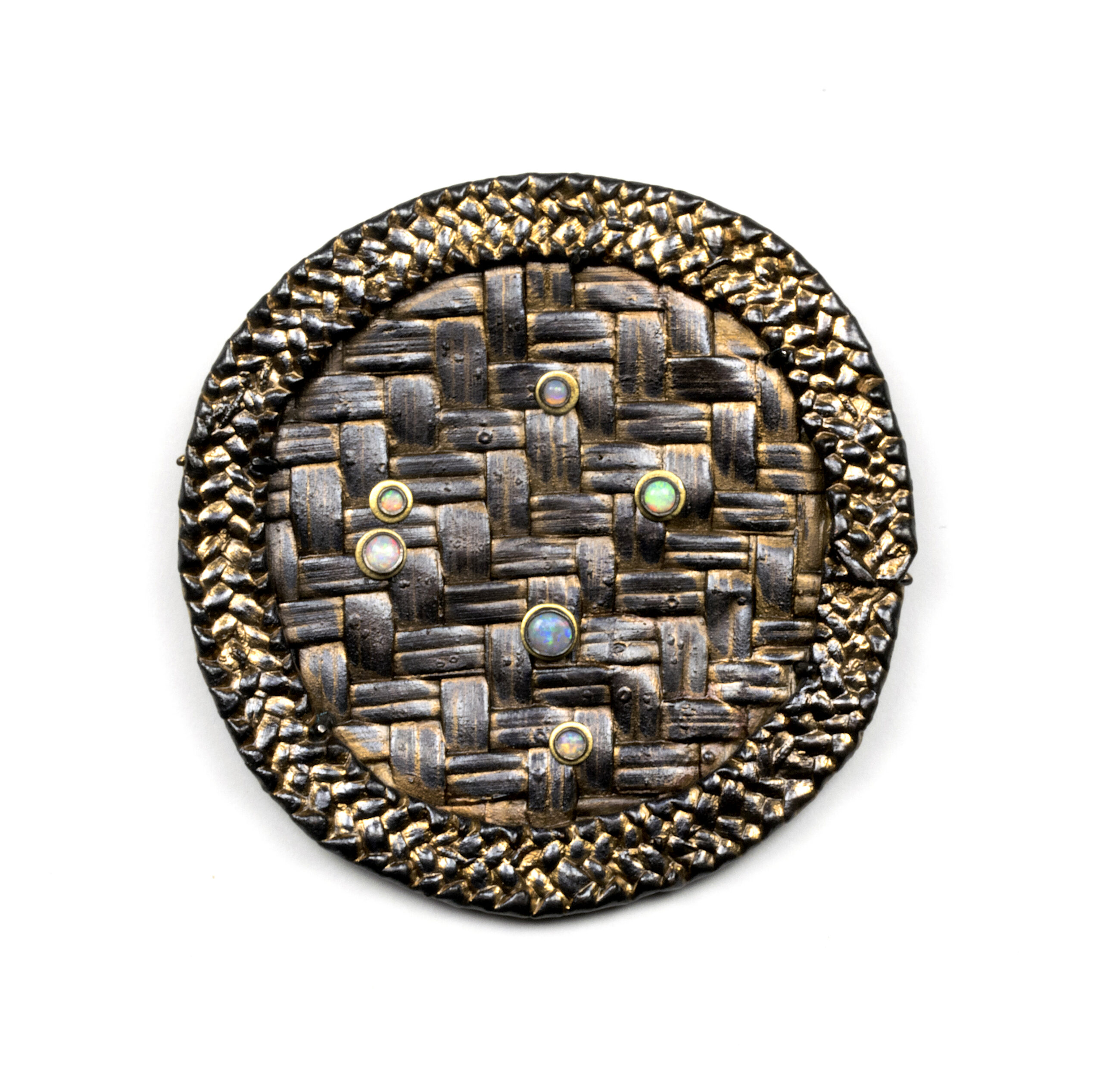Keith Lewis | The Saddest Aisle
Artist Reception: The Jewelry Library, Friday, April 19, 7:00 pm, 1239 Broadway, New York, NY 10001
“Basketweaving is as old as the human race. As far back as there are any relics of humanity are found the traces of this industry…. Made from whatever substances were most appropriate or convenient they have been shaped by the needs and decorated by the fancy of…. [both indigenous and settler societies], and have served all purposes from plates to dwelling houses.”
–Col. James Jackson quoted in George Wharton James, Indian Basketry (New York: Dover Publications, Inc., 1972, p. 13. Originally published by Henry Malkan in 1901.)
Baskets serve as the inspiration for American jeweler Keith Lewis’ latest series, The Saddest Aisle. These are not just any baskets, however, but the humble vessels used (and sometimes abused) that line the dusty shelves of a Goodwill thrift shop in Ellensburg, Washington, where Lewis resides. Unlike his earlier work, the pieces in The Saddest Aisle don’t have specific narratives. Nonetheless, invisibly buried within their tattered weaves, each basket tells a story of usage, ownership, and abandonment, functioning as an inanimate witness to the joy and suffering experienced by the inhabitants of the homes in which they were placed. Such spectral memories, along with their overall aesthetics, pique Lewis’ interest, and, in fact, the baskets, themselves, provide the basic elements from which the brooches and pendants in the series are made.
The technique Lewis employs here is electroforming, a process whereby a matrix is coated with electroconductive paint, fitted with copper wires, and then submerged in a copper sulfate/sulfuric acid bath, after which the original is burned away, leaving a copper replica. In this instance, baskets chosen for their particular woven patterns form the matrices, which are then cut into segments and electroformed. Although the actual basket parts disappear during the electroforming process, their palpable structures remain, to be subsequently augmented with embellishments, such as silver plate, enamel, mirror, glass, waxed linen, or pearls. Meaning and method conflate in The Saddest Aisle, as Lewis, in fact, views electroforming as a metaphor for his psyche. He writes: “Electroforming, as a process and as an incrustation—an agglomerate of substance over time—seems to emulate a sense of ongoing-ness and of piling up of obligation and loss that preoccupies me.” [Keith Lewis, “The Saddest Aisle” in Damian Skinner and Keith Lewis, Dead Souls: Desire and Memory in the Jewelry of Keith Lewis (Stuttgart: Arnoldsche Art Publishers, 2023, p. 177).]
Analysis of Lewis’ earlier work, examples of which are represented in this exhibition, benefits from a comparison with those in The Saddest Aisle. Like the latter, they focus on memory, loss, vulnerability, love, and desire. But where The Saddest Aisle is abstract, works from the 1990s are representational—truncated male torsos (sometimes anthropomorphic), skeletons, or body parts—personifying Lewis’ acute singular losses due to the AIDS pandemic. These, like the sexually-explicit jewelry from the early 2000s, leave little to the imagination, while The Saddest Aisle is subtle, equivocal, mysterious. Even so, a consistency of purpose spans Lewis’ entire oeuvre. All of his series are concerned with “[p]reserving the fragile and destroyed; witnessing the past; reviving and ornamenting the overlooked, the marginalized, the forgotten…”. [Damian Skinner, “History Lessons” in Damian Skinner and Keith Lewis, Dead Souls: Desire and Memory in the Jewelry of Keith Lewis, p. 200.]
Prior to a career in jewelry, Lewis was a scientist, having received a B.S. in Chemistry from Dickenson College, Carlisle, Pennsylvania, in 1981. In 1983 he began studies toward a PhD at University of Delaware, Newark, Delaware, where he became a committed gay activist, particularly involved with AIDS education and social services. After working as a chemist for several years, Lewis decided to pursue art, earning his M.F.A. at Kent State University, Kent, Ohio, in 1993. In 1994 Lewis began teaching Jewelry/Metals/Design at Central Washington University, Ellensburg, Washington, where, since 2006, he holds a Distinguished Professorship. In 2022 Lewis was inducted into the College of Fellows of the American Craft Council.
Lewis has been featured in numerous national and international exhibitions and definitive books, including Ralph Turner, Jewelry in Europe and America: New Times, New Thinking (London: Crafts Council of Great Britain and Thames and Hudson Ltd., 1996); Torch Songs: 50 Years of Northwest Jewelry, Tacoma Art Museum, Tacoma, Washington (1998); Corporal Identity/Body Language, 9th Triennial for Form and Content, Museum für Angewandte Kunst, Frankfurt, Germany and travel (2003); Challenging the Chatelaine, Design Museum, Helsinki, Finland (2006); Beijing International Art Jewelry Exhibition 2017, Institute of Fashion Technology, BIFT Park, Beijing, China (2017); Schmuck 2020, International Handwerksmesse, Munich, Germany (albeit cancelled due to Covid-19); and Schmuck/Jewelry: 2012-2021, Die Neue Sammlung, Munich, Germany (2022). During Munich Jewelry Week 2024, Lewis delivered a notable lecture on the trajectory of his remarkable career at Galerie Handwerk, which was co-sponsored by Art Jewelry Forum and Arnoldsche Art Publishers.
Lewis’ work is represented in several public collections, among them the Metropolitan Museum of Art and Museum of Arts and Design, New York, New York; Museum of Fine Arts Houston, Houston, Texas; Renwick Gallery of the Smithsonian American Art Museum, Washington, D.C.; Los Angeles County Museum of Art, Los Angeles, California; Tacoma Art Museum, Tacoma, Washington; Victoria & Albert Museum, London, England; and Die Neue Sammlung, Pinakothek der Moderne, Munich, Germany.
-Toni Greenbaum, Brooklyn, New York, April 2024


